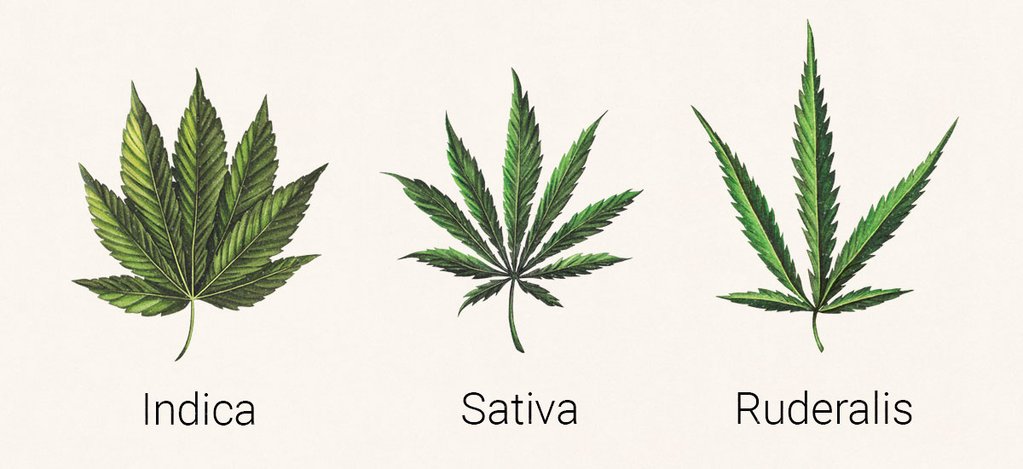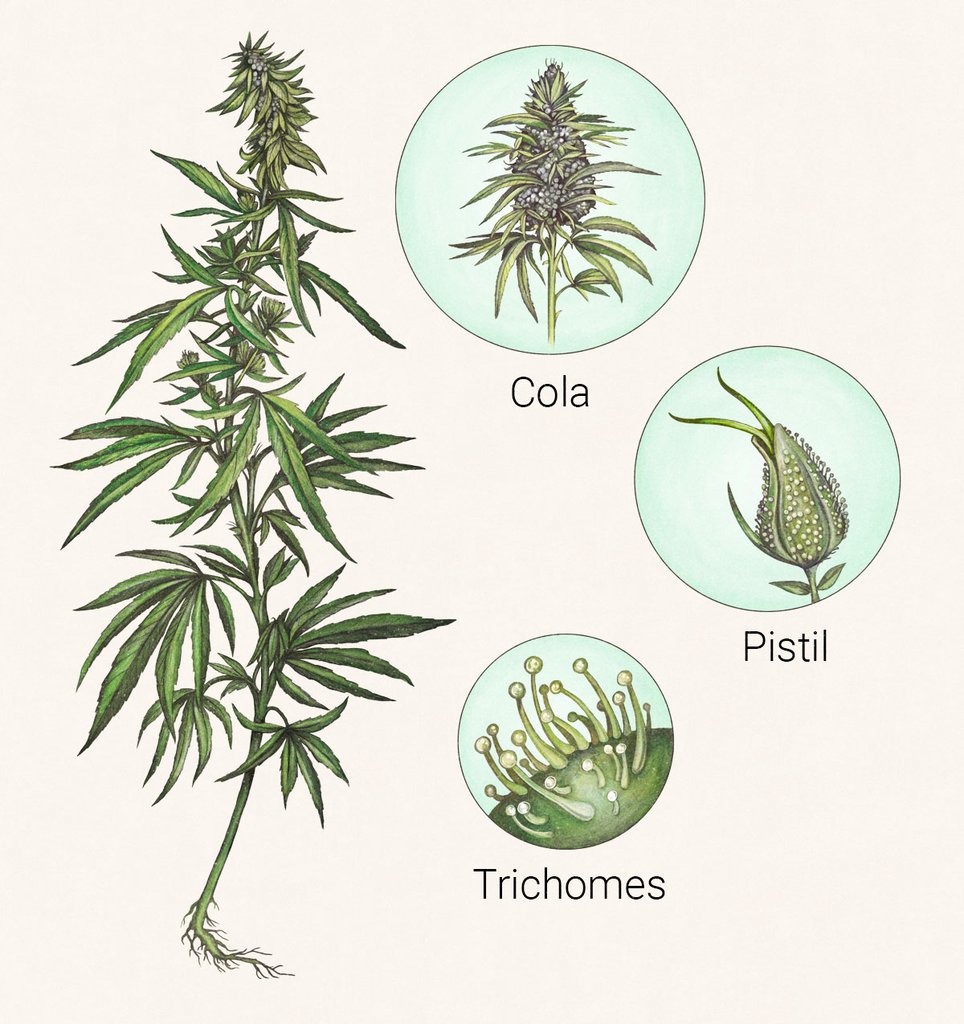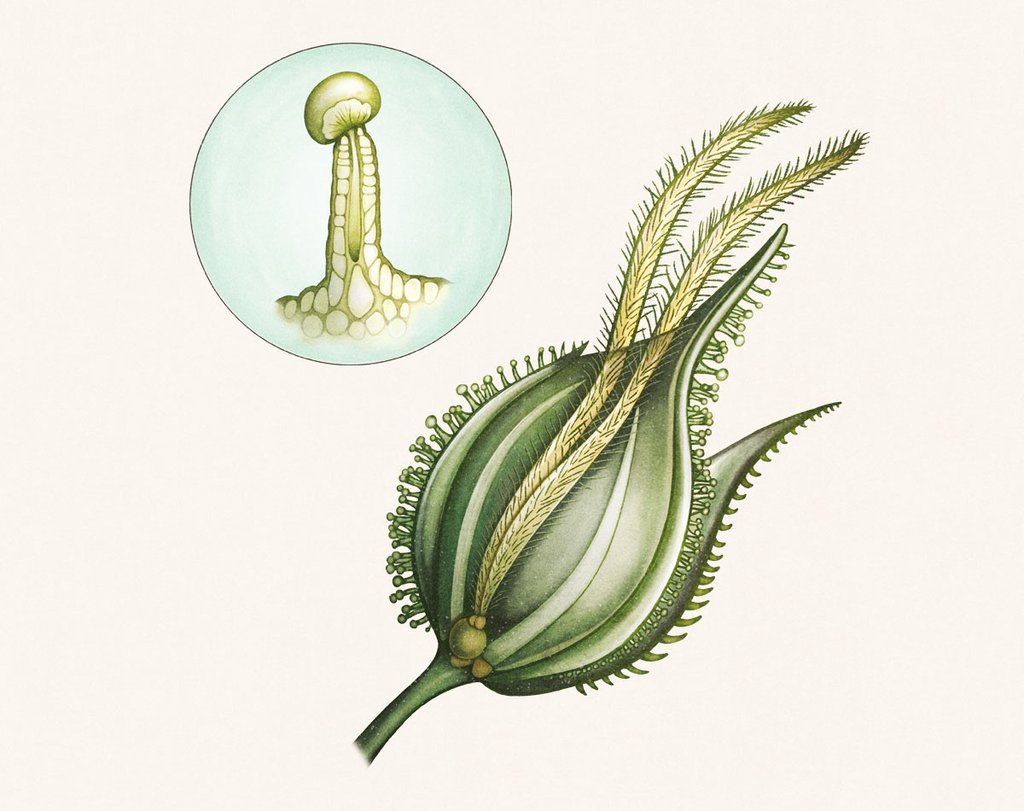Cannabis Plant Anatomy: The Parts of the Plant
Learning about the components of the cannabis plant can help you understand its effects.

Like with most plants, there are male and female cannabis plants. Both produce pre-flowers, but only female plants and hermaphroditic plants (a plant that has both male and female sex organs) fully blossom.
The flowering tip of the female plant, often called the bud, is the part harvested for consumption because it contains the highest concentration of cannabinoids, the chemical compounds that produce the effects of cannabis.

Fan Leaf: While the cannabis leaf has become the symbol of cannabis, it only produces trace amounts of cannabinoids.

Cola: A cluster of buds on a female plant. They usually grow so closely together that they appear to be one large bud. This is where the highest concentration of cannabinoids are found. The topmost cluster of buds is called the main cola or apical bud.
Pistil: These are the female plant’s reproductive parts. The pistil’s most important feature is the coloured hairs (called stigmas) that emerge from the ovule and can be seen shooting out from the bracts and ovaries. The stigmas collect pollen from the male plant to produce seeds. While the colour of the stigmas can be visually appealing, these have little to no bearing on the effect.
Calyx: A collection of cells that form part of the perianth, a delicate, translucent veil that partially encloses the seeds.
Bracts: Small tear-shaped leaves that encapsulate the plant’s ovary that contain its seeds. Some growers refer to the bract formation as the “seed pod.” Others refer to the bract formation as “sugar leaves” because of their white trichomes (see below)

